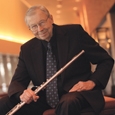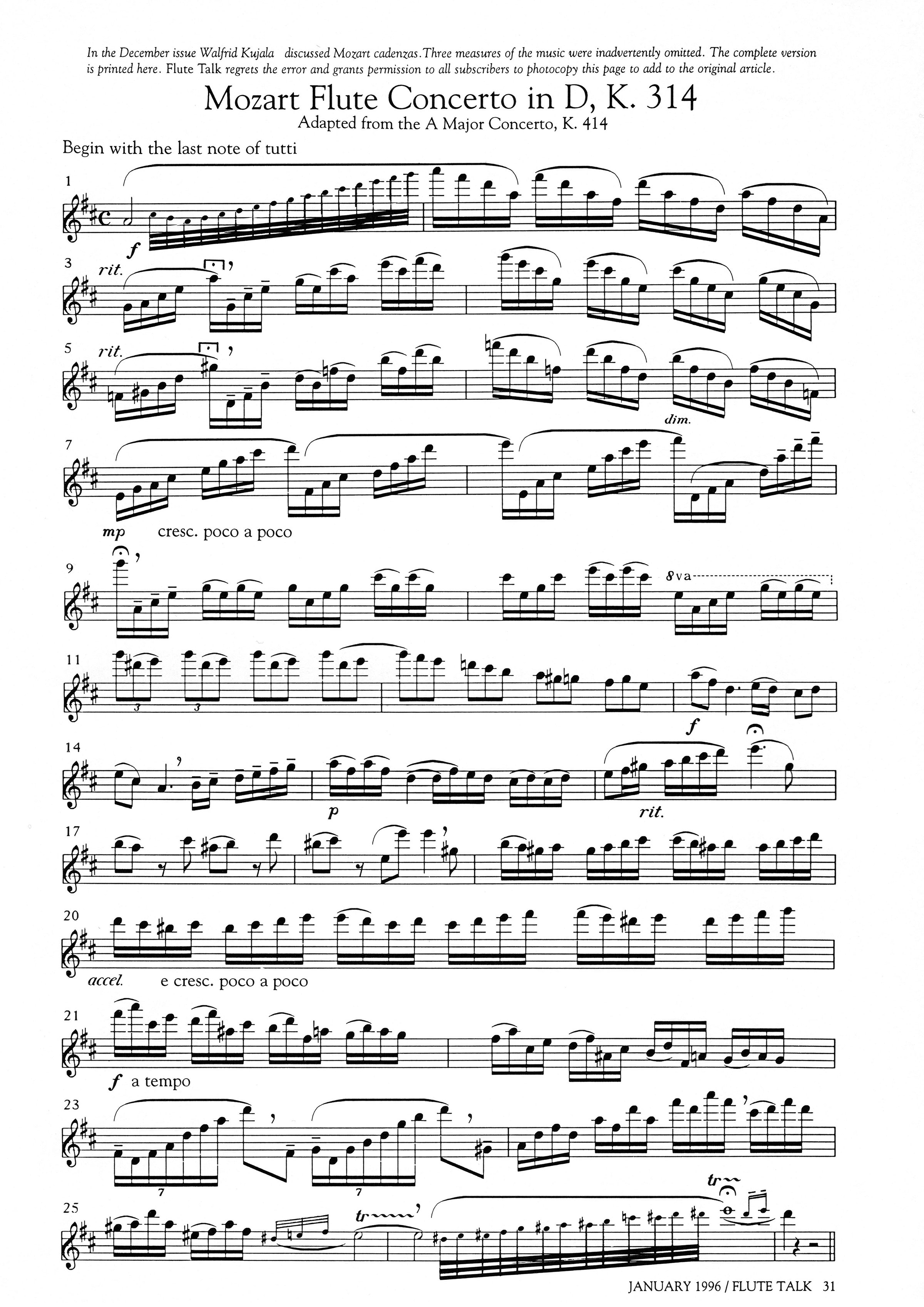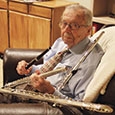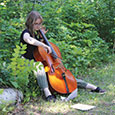The excellent performance guide to the Mozart D Major Concerto by Leonard Garrison in the November issue should have whetted every flutist’s appetite to study this great concerto again. Some readers may even be prompted to explore some new ideas for cadenzas. When deciding on a cadenza for a Mozart concerto, a flutist may choose to compose one himself; improvise one on the spot during performance; select one of the many published cadenzas; or play a Mozart cadenza.
Composing a Cadenza
As daunting as composing may seem, flutists can benefit from the inspiring guidance in Chapter 11, "Cadenzas and Lead-Ins," from Eva and Paul BaduraSkoda’s Interpreting Mozart on the Keyboard.1 This book, which remains the best source of Mozart performance practice information, is regrettably out-of-print, but should be available in most music libraries. The Badura-Skodas analyze the surviving cadenzas that Mozart wrote for 15 of his 27 piano concertos (for four of the 15 Mozart even composed alternate cadenzas), and establish clear guidelines regarding the form, harmonic style, and thematic development of these cadenzas. Analyzing Mozart’s compositional devices is obviously important, but equally important is knowing what he did not do. (See the accompanying summary of the Badura-Skodas’ findings).
Improvising a Cadenza
Although I have not yet known any flutist brave enough to improvise on the spot, it would not be surprising to witness this in the near future, thanks to the influence of the noted pianist, Robert Levin. Adhering to the tradition of Mozart’s time, Levin has earned an enviable reputation for improvising cadenzas in his many performances of Mozart concertos. Along with Bach, Beethoven, and other famous composers and performers of the 18th and early 19th centuries, Mozart improvised masterfully, and although he later wrote down many of his cadenzas, he more typically improvised them on the spot. Nowadays, anyone with a natural ability for jazz improvisation should potentially be able to learn to improvise in the classical style.
Playing Published Cadenzas
The current Flute World catalog lists 14 different cadenza composers for the D Major, 17 for the G Major, and 6 for the C Major. When selecting a published cadenza, rely on the Badura-Skoda criteria to help narrow choices. Be especially wary of cadenzas that are too long, modulate frequently to distant key, or string too many thematic fragments together in a potpourri style.
Playing a Mozart Cadenza
Many flutists are unaware that Mozart wrote a cadenza for the first movement of the D Major Concerto, although it was not actually composed for the flute. Despite the fact that Mozart was probably not con cious of it at the time, one of the two cadenzas he wrote for his Piano Concerto #12 in A Major, K. 414 fits the D Major Flute Concerto perfectly with just two adjustments: transposing it up a fourth throughout; and substituting the second theme of the flute concerto for the first theme of the piano concerto at bar 13.
Mozart Flute Concerto in D, K. 314, Adapted from the A Major Concerto K. 414
Some years ago, dutifully following the Badura-Skodas’ good advice, I read through the Mozart piano concerto cadenzas from the collection edited by Lili Kraus2, and was startled to discover an exact replica of a passage from the flute concerto (bar 87, first movement), quoted both in the upper octave and then immediately repeated in the lower octave (Mozart really loved that riff!). As a result, I began to think that the entire cadenza might suit the D Major Flute Concerto, for it turns out that seven bars before the featured bar 87 of the flute concerto is the beginning of the second theme:
.jpg)
With some added embellishments and sequential extensions, that theme substitutes perfectly at bar 13 of Mozart’s piano cadenza and leads quite naturally to the high F# that begins the aforementioned virtuosic passage. From that point on the notes, in transposition, are exactly as Mozart bequeathed them to us in his original K. 414 concerto cadenza, excepting bar 23 where I expanded his four-note arpeggios into seven-note arpeggios that better suit the flute.
This is the type of Mozart cadenza that begins directly with brilliant passage work rather than a direct statement and development of thematic material. Its fleeting arpeggios are well suited to the piano, and in addition, the pianist has the advantage of not having to take a breath during the first 12 bars. Tailoring these arpeggios to the flute, I suggest three breathing places, each one surrounded by subtle indications of rubato to make the breaths seem more natural and musical. The square-shaped fermatas are relatively short, about the equivalent of an eighth-note, whereas the round fermata in bar 9 is relatively long, about a quarter-note, and played assertively.
Even though Mozart wrote the introductory long scale in small notes in the opening measure to indicate an ad libitum style, do not misconstrue this as an invitation to rush through the scale carelessly. Take extra time on the opening C#, B, and A, then gradually accelerate through the rest of the scale, feeling it in four-note groups. Hold back the first beat of bar 23, and then accelerate into bar 3. After taking a breath in bar 3, hold back the next three notes, then accelerate to the first beat of bar 4. Apply a similar pattern of rubato to bars 4, 5, and 6, then begin bar 7 at moderate speed, accelerating up to the three tenuto notes at the end of bar 8 that prepare the declamatory high G in bar 9. After taking a full breath, make another accelerando in bars 9-10, but with momentary resistance on the second, third, and fourth notes of beats one and two in both bars to outline and enhance the phrasing. Then, in triumphant style, keep pushing the tempo in bar 11 and the first half of bar 12, but slow down enough when arriving at bar 13 to present the theme at its normal tempo (about quarter note = 116-120).
Keep a sonorous forte for a bar and a half, and after the breath in bar 14, make a dramatic diminuendo on the ascending scale leading into the echoed variation of the theme. After the ritard and fermata in bar 16, begin bar 17 rather slowly and make a slight accelerando, then hold back the second half of bar 18 to prepare a big breath before the G#.
Take plenty of time when starting the sixteenth passage at bar 19. Begin at about quarter note = 72, gradually but relentlessly accelerate and crescendo to arrive at the signature riff at bar 21 at about quarter note = 126-132. The tempo at bar 23 will suddenly be slowed (quarter note = 92), not only to accommodate the arpeggios and emphasize the eighth-note leaps, but also to prepare the final sixteenth-note passage at bar 24, which should begin at quarter note = 92, but then accelerate gradually to the E trill in bar 25. Snatch a quick breath just before the chromatic scale, and then play with a final exhilarating sprint to the high E trill. In fast movements it is customary to play the turn at the end of a final cadenza trill somewhat deliberately, more like eighth-notes, using a breath accent on each note. The entire last section of the cadenza, bars 21-27, should be played with a full but unforced sound in true bravura fashion.
Explaining the subtle artistic touches for interpreting a cadenza effectively is difficult. Tasteful rubatos and elasticity of phrasing are among the
several hallmarks of a compelling cadenza performance, and I have tried to give you at least a general description of the rubatos that could be applied to the cadenza. The best way to learn the special idioms of cadenza style is to listen, preferably with score in hand, to several concerto recordings of noted pianists, violinists, and cellists.
Footnotes
1 Badura-Skoda, Eva and Paul, Interpreting Mozart on the Keyboard, translated by Leo Black. St. Martin’s
Press, 1962.
2Kraus, Lili, The Complete Original Cadenzas by W.A. Mozart for his Solo Piano Concertos with Supplementary Cadenzas by Beethoven and Kraus. Belwin-Mills, 1972.
3Because the first three notes of the first arpeggio in bar 2 are serendipitously identical to the first three notes of the theme later quoted in bar 13, a slight ritard during these first three notes underlines their congruence to the familiar triadic theme and conveys a stronger sense of anticipation for its arrival at bar 13. Consider also making this relationship more obvious by actually transforming the rhythm of bar 2 as follows:
.jpg)
* * *
The Form of a Mozart Cadenza
Almost all of Mozart’s first movement cadenzas are comprised of three sections. The opening section begins with either one of the themes of the movement – usually the first theme – or with a virtuosic passage. If the opening is thematic, the theme is first stated in the tonic key, which then leads to passages that derive from some of the movement’s musical figures. Marking the middle section of the cadenza, the brilliant passages culminate in the statement of another theme, which is usually the second theme of the movement, typically cantabile in nature and also in the tonic key. However, if the cadenza begins with extensive virtuosic passages, as in the cadenza accompanying this article, it finally leads to a thematic statement most often the first theme, in the tonic which then begins the middle section of the cadenza.
In the middle section, the quotation of the theme seldom has such firm closure as in the body of the movement. Instead, before the expected cadence, a fragment of the quoted theme develops sequentially and in diminution through faster note values, and often modulates to the dominant key, or the dominant of the dominant. As the Badura-Skodas describe it, this continuous development then leads to the final fantasia-like section, where Mozart "allows his fantasy freest play," composing virtuoso runs of a non-thematic nature that finally lead to a trill on the dominant chord that signals the end of the cadenza.
Mozart avoids long cadenzas. His longest cadenza for a first movement is 39 bars, but most other cadenzas are significantly shorter, the shortest being five bars (K. 246). He also avoids presenting a patchwork of numerous themes and motives, as well as modulations to distant keys, seldom veering too far from the tonic. Although he does occasionally use polyphonic textures, for the most part his cadenzas are in homophonic style.
In their book the Badura-Skodas give a fascinating step-by-step description of how they composed a cadenza for the first movement of the Eb Piano Concerto (K. 482), a useful case-study to the budding cadenza composer.







